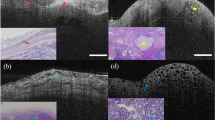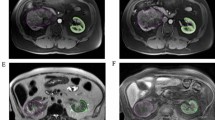Abstract
Over the last decades, advances in diagnosis and tissue microsurgical reconstruction of soft tissues have modified the therapeutic approach to salivary gland cancers, but long-term survival rates have increased only marginally. Due to the relatively low frequency of these tumors together with their diverse histopathological types, it is not easy to perform a prognosis assessment. Multivariate adaptative regression splines (MARS) is a data mining technique with a well-known ability to describe a response starting from a large number of predictors. In this work, MARS was used for determining the prognosis of cancers of salivary glands using clinical and histological variables, as well as molecular markers. Here, we have generated four different models combining different sets of variables, with sensitivities and specificities ranging from 95.45 to 100%. Specifically, one of these models which combined five clinical variables (Tumor size –T–, neck node metastasis –N–, distant metastasis –M–, age and number of tumor recurrences) plus one molecular factor (gelatinase B -MMP-9-) showed a sensitivity and a specificity of 100%. Therefore, the MARS model was applied to the modeling of the influence of several clinical and molecular variables on the prognosis of salivary gland cancers with success. A self-organizing map (SOM) is a type of neural network what was used here to determine a prognostic model composed for four variables: N, M, number of recurrences and tumor type. The sensitivity of this model was that of 97%, and its specificity was that of 94.7%.



Similar content being viewed by others
References
Center for Disease Control Statistics. United States cancer statistics. Available at: http://www.apps.nccd.cdc.gov./uscs/cancersbyraceandethnicity.aspx. (2014)
De Vicente JC, Lequerica-Fernández P, López-Arranz JS, Esteban I, Fresno MF, Astudillo A (2008) Expression of matrix metalloproteinase-9 in high grade salivary gland carcinomas is associated with their metastatic potential. Laryngoscope 118:247–251
Lequerica-Fernández P, Astudillo A, De Vicente JC (2007) Expression of vascular endothelial growth factor in salivary gland carcinomas correlates with lymph node metastasis. Anticancer Res 27:3661–3666
Hashimoto K, Hayashi R, Mukaigawa T, Yamazaki M, Fujii S (2017) Concomitant expression of ezrin and HER2 predicts distant metastasis and poor prognosis of patients with salivary gland carcinomas. Hum Pathol 63:110–119
Li Q, Huang P, Zheng C, Wang J, Ge M (2017) Prognostic significance of p53 immunohistochemical expression in adenoid cystic carcinoma of the salivary glands: a meta-analysis. Oncotarget 8:29458–29473
Saadatmand S, de Kruijf EM, Sajet A, Dekker-Ensink NG, van Nes JG, Putter H, Smit VT, van de Velde CJ, Liefers GJ, Kuppen PJ (2013) Expression of cell adhesion molecules and prognosis in breast cancer. Brit J Surg 100:252–260
Carrillo JF, Vázquez R, Ramírez-Ortega MC, Cano A, Ochoa-Carrillo FJ, Oñate-Ocaña LF (2007) Multivariate prediction of the probability of recurrence in patients with carcinoma of the parotid gland. Cancer 109:2043–2051
Lequerica-Fernández P, Peña I, Villalaín L, Rosado P, de Vicente JC (2011) Carcinoma of the parotid gland: developing prognostic indices. Int J Oral Maxillofac Surg 40:821–828
Vander Poorten VL, Hart A, Vauterin T, Jeunen G, Schoenaers J, Hamoir M, Balm A, Stennert E, Guntinas-Lichius O, Delaere P (2009) Prognostic index for patients with parotid carcinoma. International external validation in a Belgian-German database. Cancer 1:540–550
Friedman JH (1991) Multivariate Adaptive Regression Splines. The Annals of Statistics 19(1):1–67
Menéndez LÁ, de Cos Juez FJ, Lasheras FS, Riesgo JAÁ (2010) Artificial neural networks applied to cancer detection in a breast screening programme. Math Comput Model 52(7):983–991
Senapati R, Panda G, Dash PK (2014) Hybrid approach using KPSO and RLS for RBFNN design for breast cancer detection. Neural Comput Appl 24(3–4):745–753
Dawidowicz J (2017) Evaluation of a pressure head and pressure zones in water distribution systems by artificial neural networks. Neural Comput Appl. https://doi.org/10.1007/s00521-017-2844-8
Lasheras FS, de Cos Juez FJ, Sánchez AS, Krzemień A, Fernández PR (2015) Forecasting the COMEX copper spot price by means of neural networks and ARIMA models. Resour Policy 45:37–43
Menéndez-Álvarez M, Muñíz-Sierra H, Sánchez-Lasheras F, de Cos-Juez FJ (2017) A parametric model of the LARCODEMS heavy media separator by means of multivariate adaptive regression splines. Materials 10:729
Li Y, He Y, Su Y, Shu L (2016) Forecasting the daily power output of a grid-connected photovoltaic system based on multivariate adaptive regression splines. Appl Energ 180:392–401
Nieto PJG, Fernández JRA, Lasheras FS, de Cos-Juez FJ, Muñiz CD (2012) A new improved study of cyanotoxins presence from experimental cyanobacteria concentrations in the Trasona reservoir (Northern Spain) using the MARS technique. Sci Total Environ 430:88–92
De Andrés J, Sánchez-Lasheras F, Lorca P, de Cos-Juez FJ (2011) A hybrid device of self organizing maps (SOM) and multivariate adaptive regression splines (MARS) for the forecasting of firms’ bankruptcy. Account Manag Inf Syst 10(3):351
Leathwick JR, Elith J, Hastie T (2006) Comparative performance of generalized additive models and multivariate adaptive regression splines for statistical modelling of species distributions. Ecol Eng 199:188–196
Kohonen T (1990) The self-organizing map. Proc IEEE 78:1464–1480
Ortega-Zamorano F, Molina-Cabello MA, López-Rubio E, Palomo EJ (2016) Smart motion detection sensor based on video processing using self-organizing maps. Expert Syst. Appl 64:476–489
Valle MA, Ruz GA, Masías VH (2017) Using self-organizing maps to model turnover of sales agents in a call center. Appl Soft Comput 60:763–774
El-Naggar AK, Chan JKC, Grandis JR, Takata T, Slootweg PJ (eds) (2017) WHO classification of head and neck tumours. International Agency for Research on Cancer, Lyon
Panwar A, Kozel JA, Lydiatt WM (2015) Cancers of major salivary glands. Surg Oncol Clin N Am 24:615–633
Andreadis D, Epivatianos A, Poulopoulos A, Nomikos A, Papazoglou G, Antoniades D, Barbatis C (2006) Detection of C-KIT (CD117) molecule in benign and malignant salivary gland tumours. Oral Oncol 42:57–65
Bishop JA, Yonescu R, Batista D, Yemelyanova A, Ha PK, Westra WH (2014) Mucoepidermoid carcinoma does not harbor transcriptionally active high risk human papillomavirus even in the absence of the MAML2 translocation. Head Neck Pathol 8:298–302
Liu S, Ruan M, Li S, Wang L, Yang W (2014) Increased expression of MUC1 predicts poor survival in salivary gland mucoepidermoid carcinoma. J Craniomaxillofac Surg 42:1891–1896
Siyi L, Shengwen L, Min R, Wenjun Y, Lizheng W, Chenping Z (2014) Increased expression of MUC-1 has close relation with patient survivor in high-grade salivary gland mucoepidermoid carcinoma. J Oral Pathol Med 43:579–584
Gonçalves CF, Morais MO, Alencar RdeC, Mota ED, Silva TA, Batista AC, Mendonça EF (2011) Expression of Ki-67 and MUC1 In mucoepidermoid carcinomas of young and adult patients: prognostic implications. Exp Mol Pathol 90:271–275
Shemirani N, Osipov V, Kolker A, Khampang P, Kerschner JE (2011) Expression of mucin (MUC) genes in mucoepidermoid carcinoma. Laryngoscope 121:167–170
Fukusumi T, Califano JA (2018) The NOTCH pathway in head and neck squamous cell carcinoma. J Dent Res 1:22034518760297
van Weert S, van der Waal I, Witte BI, Leemans CR, Bloemena E (2015) Histopathological grading of adenoid cystic carcinoma of the head and neck: analysis of currently used grading systems and proposal for a simplified grading scheme. Oral Oncol 51:71–76
Ahmed MM, Abo-Hager EA (2010) Differential expression of c-kit and CD43 in histological subtypes of adenoid cystic carcinoma of salivary gland. Saudi Dent J 22:27–34
Seethala RR, Pasha TL, Raghunath PN, Livolsi VA, Zhang PJ (2008) The selective expression of CD43 in adenoid cystic carcinoma. Appl Immunohistochem Mol Morphol 16:165–172
Lewis AG, Tong T, Maghami E (2016) Diagnosis and management of malignant salivary gland tumors of the parotid gland. Otolaryngol Clin North Am 49:343–380
Lewis JE, Olsen KD, Weiland LH (1991) Acinic cell carcinoma. Clinicopathologic review. Cancer 67:172–179
Liu Y, Su M, Yang Y, Zhao B, Qin L, Han Z (2017) Prognostic factors associated with decreased survival in patients with acinic cell carcinoma of the parotid gland. J Oral Maxillofac Surg 75:416–422
Wenig BM (2008) Section 4: major and minor salivary glands. Neoplasms of the salivary glands. In: Wenig BM (ed) Atlas of head and neck pathology, 2nd edn. Elsevier, Philadelphia, pp 582–702
Hu YH, Zhang CY, Xia RH, Tian Z, Wang LZ, Li J (2016) Prognostic factors of carcinoma ex pleomorphic adenoma of the salivary glands, with emphasis on the widely invasive carcinoma: a clinicopathologic analysis of 361 cases in a Chinese population. Oral Surg Oral Med Oral Pathol Oral Radiol 122:598–608
Bjørndal K, Larsen SR, Therkildsen MH, Kristensen CA, Charabi B, Andersen E, Overgaard J, Schytte S, Pedersen HB, Andersen LI, Johansen J, Godballe C (2016) Danish Head and Neck Cancer Group (DAHANCA) and Academy of Geriatric Cancer Research (AgeCare). Does age affect prognosis in salivary gland carcinoma patients? A national Danish study. Acta Oncol 55(Suppl 1):19–22
Acknowledgements
This work was supported by a grant for scientific research from the Ministry of Health, Spain (Instituto de Salud Carlos III, PI070675).
Author information
Authors and Affiliations
Corresponding author
Ethics declarations
Conflict of interest
The authors report no conflicts of interest in this work.
Rights and permissions
About this article
Cite this article
Lequerica-Fernández, P., Peña, I., Iglesias-Rodríguez, F.J. et al. Outcome prediction for salivary gland cancer using multivariate adaptative regression splines (MARS) and self-organizing maps (SOM). Neural Comput & Applic 32, 1219–1229 (2020). https://doi.org/10.1007/s00521-018-3473-6
Received:
Accepted:
Published:
Issue Date:
DOI: https://doi.org/10.1007/s00521-018-3473-6




